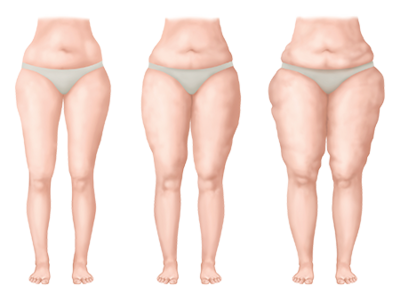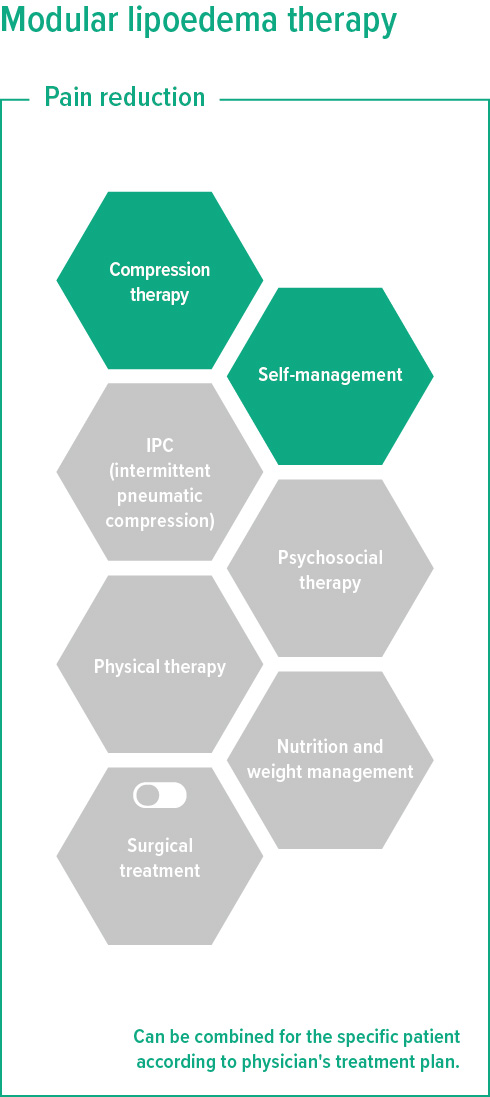For some patients, surgical intervention may also be considered. Liposuction – that is, fat removal – permanently reduces the affected subcutaneous fat tissue. This can reduce pain on the long term or even get rid of it, but is not a cure and represents a significant and painful intervention in which the entire area affected by lipoedema is operated on. For this reason, it is necessary to decide in each individual case whether to adopt non-surgical treatment or whether surgery and potential undesirable side effects such as scarring of tissue are reasonable and beneficial.
The following aspects must be considered before a surgical operation in cases of lipoedema:
- Documented pain without improvement despite non-surgical therapy
- Existence of complications such as restrictions of mobility, secondary conditions of the skin or joints
- Ideally waist-height ratio (WtHR) < 0.55
- Preliminary treatment of existing obesity
- Decongestion of any other existing oedemas before surgery
- Ideally only from the age of 18 on
Defining the indications for liposuction is no longer oriented on the conventional classification into stages, since there is no correlation between the severity of symptoms and the previous stages.
Carrying out liposuction
Whether lipoedema operations are outpatient or inpatient generally depends on the extent of the condition, any concomitant conditions as well as sedation. Suction should be carried out using a method that is gentle on the tissue and lymph vessels. Here, power-assisted (PAL) and water-assisted (WAL) systems are used with local tumescent anaesthesia or general anaesthesia. In 1 to 4 sessions for both legs or 1 to 2 sessions for both arms, at most 10% of the body weight is suctioned off per operation (aspiration volume).
After liposuction
Immediately after liposuction, complex manual decongestive therapy (CDT) should be carried out. Depending on the symptoms, the patients continue to receive non-surgical therapy. The focus is then on mobility, weight stability and stress regulation.






